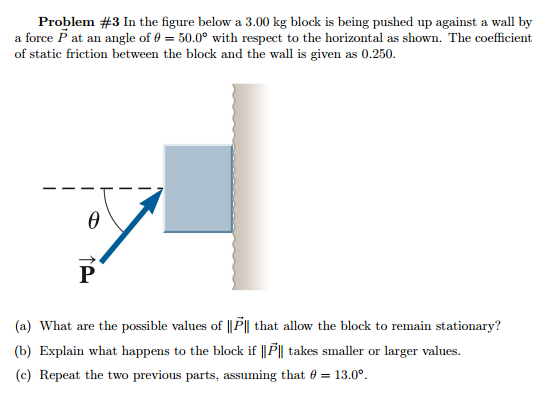Problem #3 In the figure below a 3.00 kg block is being pushed up against a wall by a force P→ at an angle of θ = 50.0∘ with respect to the horizontal as shown. The coefficient of static friction between the block and the wall is given as 0.250 . (a) What are the possible values of ∥P→∥ that allow the block to remain stationary? (b) Explain what happens to the block if ∥P→∥ takes smaller or larger values. (c) Repeat the two previous parts, assuming that θ = 13.0∘.
